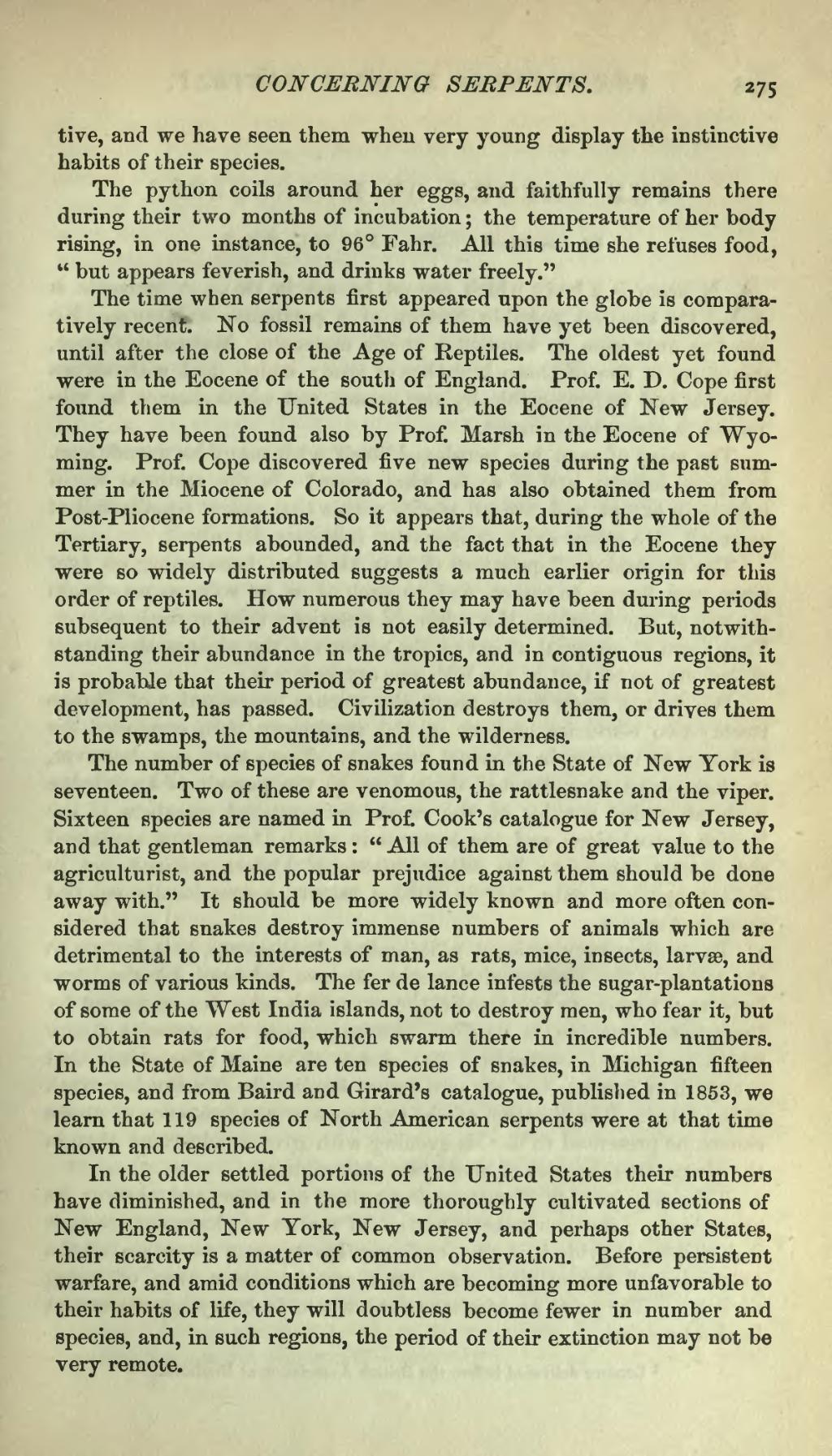tive, and we have seen them when very young display the instinctive habits of their species.
The python coils around her eggs, and faithfully remains there during their two months of incubation; the temperature of her body rising, in one instance, to 96° Fahr. All this time she refuses food, "but appears feverish, and drinks water freely."
The time when serpents first appeared upon the globe is comparatively recent. No fossil remains of them have yet been discovered, until after the close of the Age of Reptiles. The oldest yet found were in the Eocene of the south of England. Prof. E. D. Cope first found them in the United States in the Eocene of New Jersey. They have been found also by Prof. Marsh in the Eocene of Wyoming. Prof. Cope discovered five new species during the past summer in the Miocene of Colorado, and has also obtained them from Post-Pliocene formations. So it appears that, during the whole of the Tertiary, serpents abounded, and the fact that in the Eocene they were so widely distributed suggests a much earlier origin for this order of reptiles. How numerous they may have been during periods subsequent to their advent is not easily determined. But, notwithstanding their abundance in the tropics, and in contiguous regions, it is probable that their period of greatest abundance, if not of greatest development, has passed. Civilization destroys them, or drives them to the swamps, the mountains, and the wilderness.
The number of species of snakes found in the State of New York is seventeen. Two of these are venomous, the rattlesnake and the viper. Sixteen species are named in Prof. Cook's catalogue for New Jersey, and that gentleman remarks: "All of them are of great value to the agriculturist, and the popular prejudice against them should be done away with." It should be more widely known and more often considered that snakes destroy immense numbers of animals which are detrimental to the interests of man, as rats, mice, insects, larvæ, and worms of various kinds. The fer de lance infests the sugar-plantations of some of the West India islands, not to destroy men, who fear it, but to obtain rats for food, which swarm there in incredible numbers. In the State of Maine are ten species of snakes, in Michigan fifteen species, and from Baird and Girard's catalogue, published in 1853, we learn that 119 species of North American serpents were at that time known and described.
In the older settled portions of the United States their numbers have diminished, and in the more thoroughly cultivated sections of New England, New York, New Jersey, and perhaps other States, their scarcity is a matter of common observation. Before persistent warfare, and amid conditions which are becoming more unfavorable to their habits of life, they will doubtless become fewer in number and species, and, in such regions, the period of their extinction may not be very remote.
